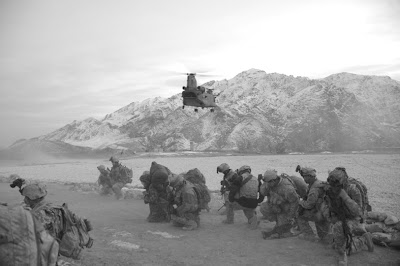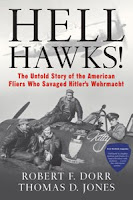Hitler’s Nazi Party, at its evil roots, embraced a bizarre interpretation of ancient European paganism, blending it with fragments of other traditions from sources as diverse as tenth-century Saxon warlords, nineteenth-century spiritualism, and early-twentieth-century fringe archeology.
At the heart of the evil was Hitler’s “witch doctor,” Heinrich Himmler, and his stranger-than-fiction cult, the deadly SS. The mundanely named Schutzstaffel, literally “protective squadron,” was the very essence of Nazism, and their threatening double lightning bolt was one of the most dreaded symbols of the Third Reich. With good reason: what the SS was truly protecting was the ideology of Aryan superiority.
At the heart of the evil was Hitler’s “witch doctor,” Heinrich Himmler, and his stranger-than-fiction cult, the deadly SS. The mundanely named Schutzstaffel, literally “protective squadron,” was the very essence of Nazism, and their threatening double lightning bolt was one of the most dreaded symbols of the Third Reich. With good reason: what the SS was truly protecting was the ideology of Aryan superiority.
In the following excerpt from HITLER'S MASTER OF THE DARK ARTS, author Bill Yenne explores how Himmler and his SS doctors used of concentration-camp inmates as the subjects of many disturbing "scientific" experiments.
- - - - - - - - - - - - - - - - - - - - - - - - - - - - - - -
The cruelest corollary to the villainy institutionalized by Heinrich Himmler and SS Totenkopfverbände during World War II was probably the use of concentration-camp inmates in the furtherance of what the SS and its Ahnenerbe had the audacity to describe as “science.”
Again, their line of thinking stretched back into the nineteenth century to the Social Darwinists and their pseudoscientific belief in a racial hierarchy. When the Social Darwinists wrote of natural selection in human society, advocating the sidelining those in society who were considered inferior, they opened the door to those who considered the inferior human races to be not human at all. The same pseudoscience that gave the Nazis their excuse to eradicate the untermenschen like head lice gave the Nazis permission to use the untermenschen as lab rats.
The use of people from concentration camps for gruesome medical experiments was widespread, although it was not centrally directed, as the “ancestral research” conducted under the Ahnenerbe was. The SS functioned as a sort of medical foundation of the dark side, facilitating various projects with infrastructure, personnel, and, of course, human guinea pigs. Much of the funding and encouragement was filtered through the Institut für Wehrwissenschaftliche Zweckforschung (Institute for Military Scientific Research), which was set up within the Ahnenerbe and headed directly by Wolfram Sievers.
One of the most notorious of the SS doctors was Dr. Eduard Wirths, the primary physician at Auschwitz. Having become a member of the NSDAP while a medical student at Würzburg, he joined the Waffen SS in 1939. After suffering a heart attack on the Eastern Front in 1942, he was transferred to concentration-camp duty, first at Dachau and then at Auschwitz. It was at the latter that numerous medical experiments were conducted by SS doctors that were under Wirths’s direct command. He was particularly interested in experiments around the spread of typhus and in a large-scale project involving the removal of reproductive organs from live women, which were then sent to various institutes in Germany for study. Most of the subjects involved in both projects died as a result.
While Wirths supervised actual doctors, including those providing medical care to the übermensch SS personnel, he also had a number of doctors on his staff whose principal, or only, function at Aushwitz was “research” using human—or rather “subhuman”—subjects.
Conducting experiments on female subjects under Wirths at Auschwitz was Dr. Carl Clauberg, a prewar professor for gynecology at the University of Königsberg turned SS Gruppenführer. When it became established policy under the Final Solution to prevent the untermenschen from breeding, Clauberg approached Heinrich Himmler personally with a proposal to conduct experiments aimed at finding a practical method of mass sterilization. All he needed, implored Clauberg, was access to experimental subjects. Himmler sent Clauberg to Aushwitz in December 1942. There Clauberg experimented on both Jewish and Gypsy subjects, using drugs, acid, and radiation—almost always without anesthetic.
Again, their line of thinking stretched back into the nineteenth century to the Social Darwinists and their pseudoscientific belief in a racial hierarchy. When the Social Darwinists wrote of natural selection in human society, advocating the sidelining those in society who were considered inferior, they opened the door to those who considered the inferior human races to be not human at all. The same pseudoscience that gave the Nazis their excuse to eradicate the untermenschen like head lice gave the Nazis permission to use the untermenschen as lab rats.
The use of people from concentration camps for gruesome medical experiments was widespread, although it was not centrally directed, as the “ancestral research” conducted under the Ahnenerbe was. The SS functioned as a sort of medical foundation of the dark side, facilitating various projects with infrastructure, personnel, and, of course, human guinea pigs. Much of the funding and encouragement was filtered through the Institut für Wehrwissenschaftliche Zweckforschung (Institute for Military Scientific Research), which was set up within the Ahnenerbe and headed directly by Wolfram Sievers.
One of the most notorious of the SS doctors was Dr. Eduard Wirths, the primary physician at Auschwitz. Having become a member of the NSDAP while a medical student at Würzburg, he joined the Waffen SS in 1939. After suffering a heart attack on the Eastern Front in 1942, he was transferred to concentration-camp duty, first at Dachau and then at Auschwitz. It was at the latter that numerous medical experiments were conducted by SS doctors that were under Wirths’s direct command. He was particularly interested in experiments around the spread of typhus and in a large-scale project involving the removal of reproductive organs from live women, which were then sent to various institutes in Germany for study. Most of the subjects involved in both projects died as a result.
While Wirths supervised actual doctors, including those providing medical care to the übermensch SS personnel, he also had a number of doctors on his staff whose principal, or only, function at Aushwitz was “research” using human—or rather “subhuman”—subjects.
Conducting experiments on female subjects under Wirths at Auschwitz was Dr. Carl Clauberg, a prewar professor for gynecology at the University of Königsberg turned SS Gruppenführer. When it became established policy under the Final Solution to prevent the untermenschen from breeding, Clauberg approached Heinrich Himmler personally with a proposal to conduct experiments aimed at finding a practical method of mass sterilization. All he needed, implored Clauberg, was access to experimental subjects. Himmler sent Clauberg to Aushwitz in December 1942. There Clauberg experimented on both Jewish and Gypsy subjects, using drugs, acid, and radiation—almost always without anesthetic.




































